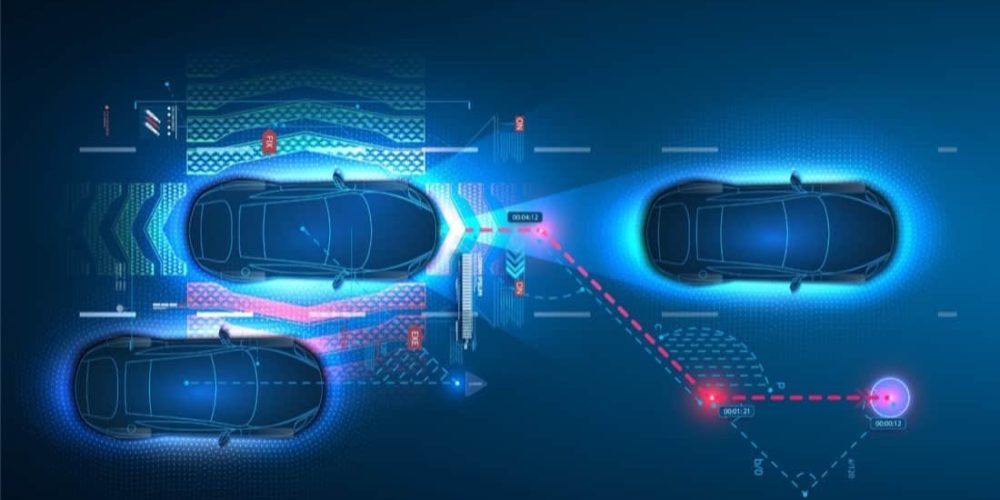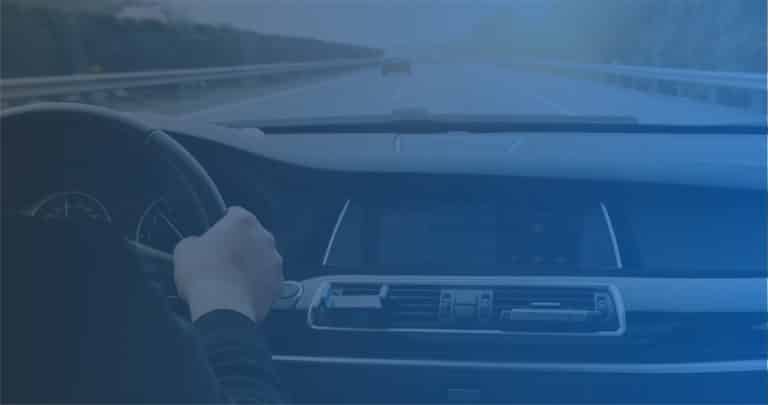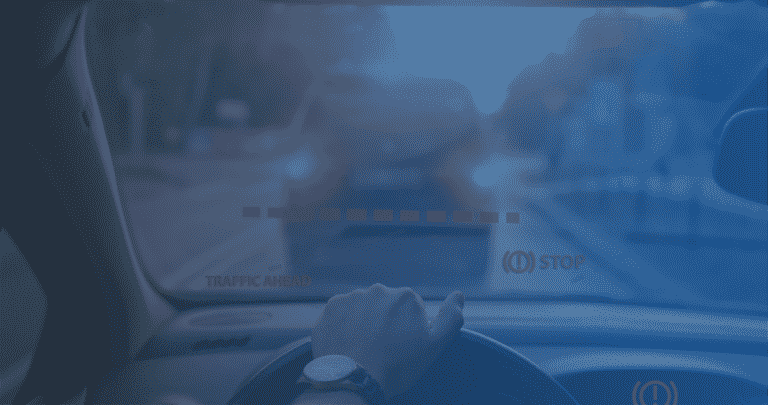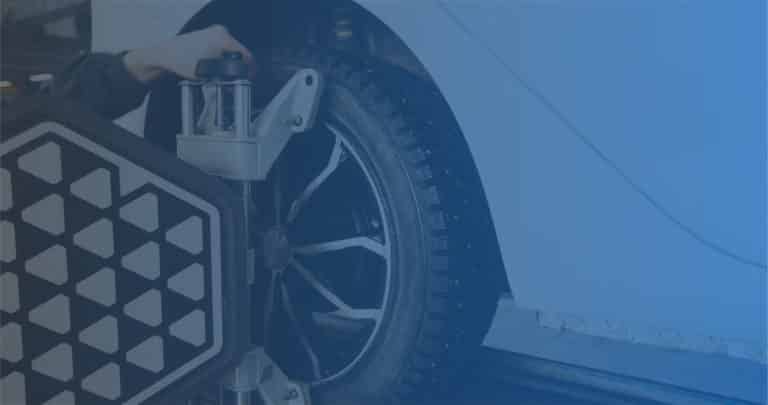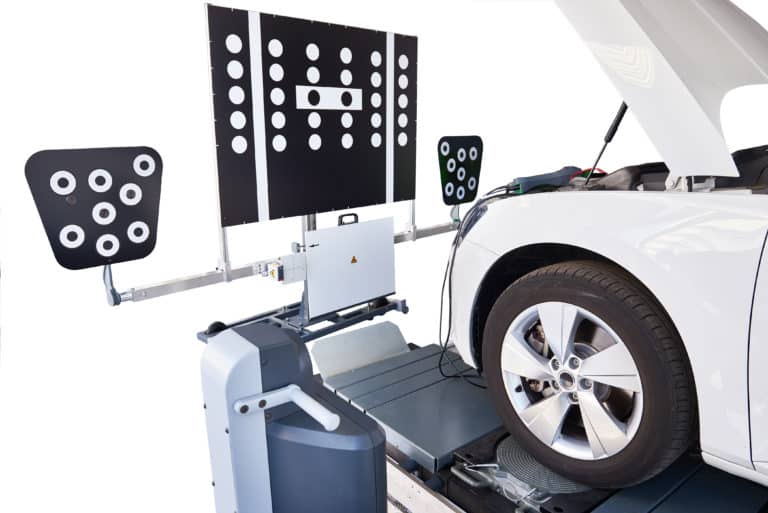You may have heard the term ADAS sensors before, but what are these sensors? And what do they do?
ADAS sensors, essential components of advanced driver assistance systems, significantly enhance driver safety by offering critical insights into the vehicle’s environment. There many different types of ADAS sensors, ADAS cameras, radar, LiDAR (light detection and ranging), and ultrasonic sensors, each playing a unique role in monitoring and responding to surrounding conditions. This article will be an in-depth rundown of all the different types of ADAS sensors, their functionalities, and the benefits they bring to automotive safety.
Types of ADAS Sensors
ADAS employ a variety of sensors to “see” what is going on around the vehicle to do their tasks. The most frequent are cameras, radar, and ultrasonic sensors.
Using multiple types of sensors allows the vehicle to make decisions based on all available information, which is why it’s so important for ADAS features to have a variety of different sensing technologies. Some systems only use data from one type of ADAS sensor, while others integrate data from multiple sensors to develop a more precise “view” of the environment and situation.
Here are the types of sensors in automobiles:
Camera Sensors
Cameras are one of the most common types of ADAS sensors used in today’s vehicles and they come in various forms depending on their function within a system. These ADAS sensors are crucial for detecting objects in the road, including cars, cyclists, and pedestrians. Additionally, these ADAS sensors play a vital role in enhancing vehicle safety and navigation by providing critical visual data that helps support other safety features such as collision avoidance systems and lane departure warnings. The functionality of ADAS sensors, especially cameras, extends to more complex tasks like interpreting traffic signs and monitoring blind spots, making them indispensable in modern automotive safety technologies.
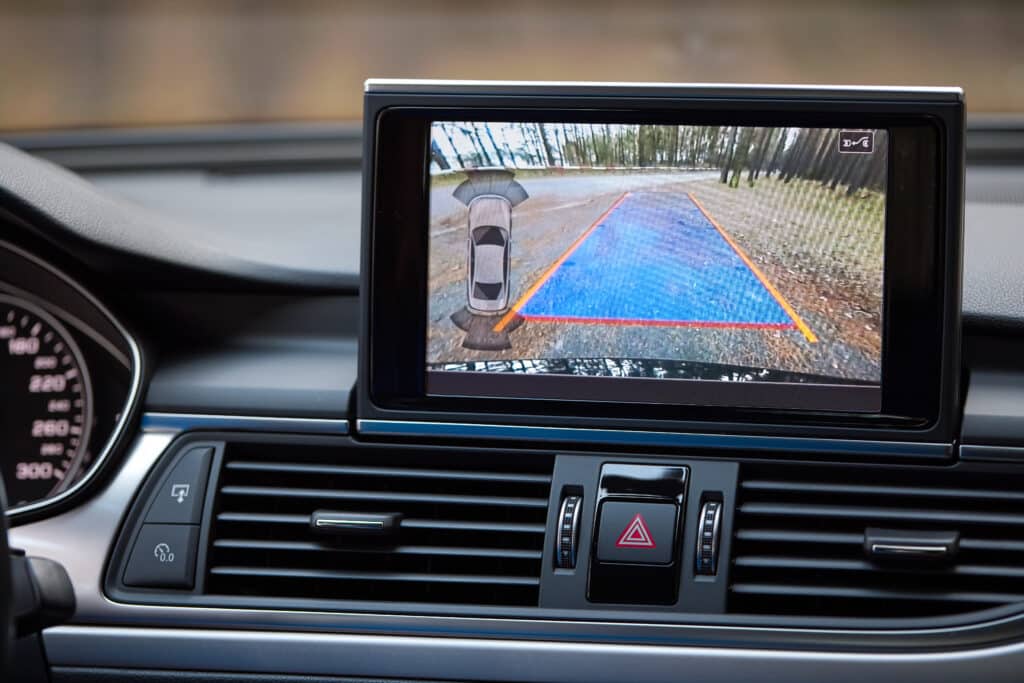
ADAS Cameras are vital for ADAS because they are the main sensory component for most automaker ADAS systems. Without them, the car would be blind to the world around it.
In fact, many cars now have front-facing camera sensors as a standard feature. Let’s explore the ADAS camera sensor types. The following ADAS systems all use data from these special cameras:
- adaptive cruise control
- automatic emergency braking
- lane departure warning
- lane keeping assist
- automated headlight high-beam activation and dimming
A Note About ADAS Camera Sensors vs. Dash Cams
The high-powered microprocessors and complex data processing algorithms built into the camera assembly distinguish ADAS camera sensors from popular auto dash cams. These components convert the continuously changing analog image obtained by the camera into digital data that may be used to operate a variety of safety systems.
One example of ADAS camera sensors is in the Subaru EyeSight ADAS suite. But, Subaru takes it a step further. Instead of employing one forward-mounted ADAS camera, Subaru uses two twin forward mounted cameras for increased accuracy of its forward sensing data.
360-Degree and Surround View Cameras
Some new cars feature 360-degree cameras that utilize a variety of tiny cameras positioned at the front, rear, and sides of the car to show an overhead view of the vehicle’s immediate surroundings. This can be used for features such as parking assistance and lane change warnings.
For example, the 2022 Hyundai Sonata, includes Surround View Monitor on the Limited Trim. This feature includes four cameras, one on each side mirror and two at the rear of the vehicle. The Sonata has a special split-screen image that shows all angles simultaneously on the infotainment touchscreen.
Read More: ADAS Cameras: How They Work and Why They Need Calibration
Radar Sensors
Radar sensors are also commonly used in ADAS systems, usually as part of a collision-avoidance system. This type of ADAS sensor works by emitting radio waves that reflect off objects and return to the sensor.
The time it takes for the wave to return is used to calculate the object’s distance. This information is then processed by a computer to create a three-dimensional image of the surrounding area. This type of sensor is used in many ways, including the following ADAS:
Radar sensors are important for ADAS because they can detect objects at a distance and in poor weather conditions, such as rain or fog. This ADAS sensor is important because the car needs all the information it can get to make the safest decision possible.
With radar sensors, there are two main types: Front Radar Sensors and Rear Radar Sensors.
Front Radar Sensors are placed at the front of the car, often underneath the grill. These sensors are important for systems that rely on information coming from the front of the car. Here are a few systems that use these ADAS sensors:
- Automatic Emergency Braking (AEB)
- Adaptive Cruise Control (ACC)
- Traffic Jam Assist (TJA)
- Forward Collision Warning (FCW)
Rear Radar Sensors on the other hand are used in systems that need to be aware of vehicles and objects that are behind the car. Here are systems that use the ADAS sensors:
- Rear Cross-Traffic Alert (RCTA)
- Active Lane Change Assist
- Rear Collision Warning
- Blind Spot Monitoring (BSM)
An example of a car with radar sensors is the 2021 Toyota Camry. It has radar sensors in the lower front bumper to detect cars, people, or animals on or near the road.
Read More: ADAS Radar Sensor: How it Works and Why it Needs Calibration
LiDAR Sensors
Light Detection and Ranging (LiDAR) sensors are like radar in that they use lasers to measure distances. LiDAR sensors also have the precision and capability to find smaller things. For example, they can also identify people and irregularities in the terrain.
LiDAR sends out billions of light photons every second to detect non-stationary objects in real-time. It employs a pulsed laser to detect nearby things.
With both camera and radar advantages, LiDAR ADAS sensors are extremely accurate and detailed, yet have a wide range.
Read More: Will Automotive LiDAR Sensors Replace Traditional ADAS Technology?
GPS/GNSS Sensors
Most cars now employ the Global Navigation Satellite System (GNSS). GNSS is a combination of more than 30 Earth-orbiting satellites that transmits precise time and position data constantly. When a receiver has four or more usable signals from at least four of these satellites, it can triangulate its position. The greater the number of working satellites, the more accurate the location.
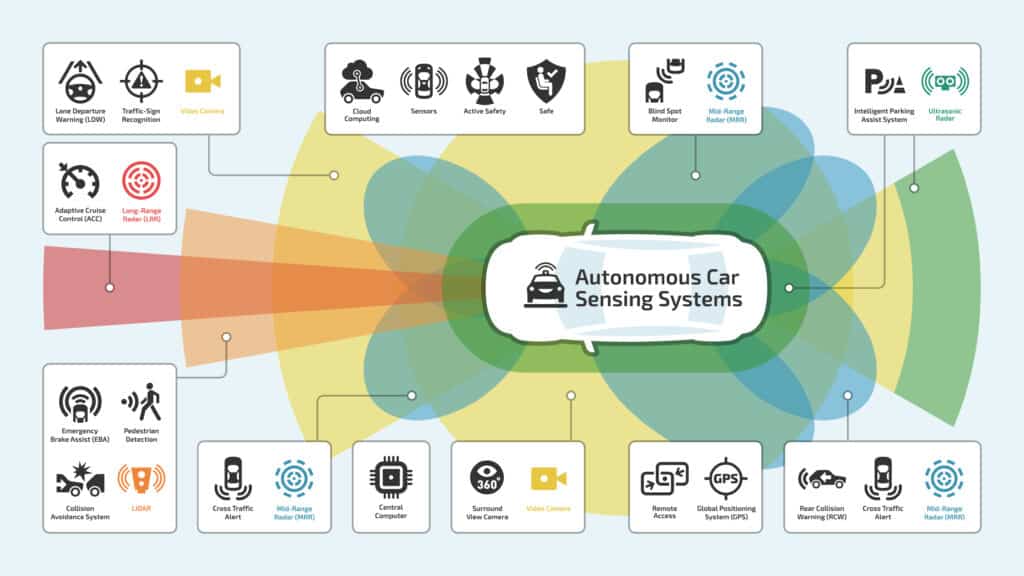
Most ADAS systems use GNSS sensors to determine a car’s position and orientation relative to its surroundings. This information is then used by other sensors or in conjunction with map data to create an even more precise view of the situation.
This is important because it allows the car to make decisions based on its location and the surrounding environment. Furthermore, this ADAS feature enables automated vehicles to use GNSS receivers that utilize several frequencies and constellations, Synchronous Position Attitude and Navigation (SPAN) technology, GPS Anti-Jam technology and interference mitigation, and correction services to provide positioning and sensor integration. Ultimately, driving us to the future of full autonomous cars.
Pros and Cons of GPS/GNSS
While this is a relatively new addition to ADAS, GPS/GNSS sensors are increasingly common. This is because of the many benefits they offer ADAS systems over older technologies like laser radar and sonar. Like any other technology, the GNSS sensors have their pros and cons.
With GNSS comes advantages such as:
- Simple – Other cutting-edge technologies, such as LiDAR and machine learning, are more challenging to implement in ADAS vehicles. Integration of several devices into a single sensing environment is important.
- Inexpensive – Another benefit of the long commercial life of GPS is that it has aided in this area. It’s been around the block and become common enough for businesses to invest a significant amount of money into developing low-cost technology variants. Researchers are still working on lowering the cost of GPS sensors.
- Separated – GPS does not work in a car’s immediate vicinity. GPS technology is based on the movement of satellites rather than on the location of a vehicle. This degree of distance makes it an excellent choice for data authentication.
As with any technology, there are also cons:
- Inaccurate – GNSS receivers can pinpoint their location very precisely, but this accuracy is not good enough for primary navigation in cars. If just one satellite is out of position, the location of a GNSS sensor can be completely thrown off. A GNSS receiver must use data from various satellites to reduce this problem.
- Unreliable – GPS receiver must have a line of sight to at least 4 satellites to function as precisely as we require. Thus, this difficulty makes GNSS receivers particularly unsuitable for urban environments.
- Requires Mapping – GNSS also needs mapping data to function. If the GPS receivers can’t get a signal from the satellites, they will be rendered useless. This also means that mapping data must be updated for the system to work, adding a significant cost to an already expensive ADAS system.
Ultrasonic/Sonar Sensors
Ultrasonic sensors are primarily used in parking assist and self-parking systems. These ADAS sensors are positioned inside the front and/or rear bumper covers, utilizing reflected high-frequency sound waves to identify people, automobiles, and other objects within proximity to the car.
Sonar sensors also detect whether the vehicle is properly positioned within a parking space. If this feature detects that the car is outside of an appropriate zone, it will sound a warning tone or move into a more appropriate position using brake control.
There are also ultrasonic sensors in air-bag control systems. These work by emitting a burst of ultrasound when the car’s airbags are deployed. This sensor helps to determine the exact location of the occupant.
ADAS Sensors Today
The goal is one environmental model created through sensor fusion. This means bringing together the data from the vehicle’s radar, LiDAR, cameras, and other sensors, to create one model.
A vehicle with a sensor fusion system can combine the finest data from all of its systems while disregarding anything else. Because each of the radars, cameras, and other sensors employed by the car for self-driving purposes have distinct capabilities, their data must be combined to create improved ADAS features including cross-traffic aid and obstacle avoidance.
While camera systems are useful for detecting roads, reading signs, and identifying other vehicles, LiDAR solutions are better at accurately determining the car’s position and radars are better at measuring speed.
| Pros | Cons | |
| Radar | Detects in bad weather and in the dark | Doesn’t have high resolution at range (trouble telling bicycles from motorcycles) |
| LiDAR | High resolution at range Very accurate 3d modeling and object detection | Lesser 2D resolution than camera Can’t see through bad weather as well as radar High cost Requires significant computing power |
| Camera | High resolution Closest to human vision, detecting colors and 2D shapes Relatively low cost sensor | Sunlight can blind them Poor vision during low visibility weather Contrast is an issue Depth information not available |
Sensor fusion is the union of all these and other autonomous driving systems, when smartly combined and deployed, which provides well-equipped cars a 360-degree view of the environment.
ADAS Sensor Calibration
ADAS sensor technology is an exciting innovation. Along with it comes the need for ADAS sensors to be calibrated following several common situations: windshield replacement, fender benders and collisions, adjacent repair work, and changes in wheel alignment. Any time that a sensor is moved from its original position, it needs to be recalibrated, by a professional, in a specially designed environment.
Without calibration, a vehicle’s ADAS systems can be inoperable or even work incorrectly — initiating warning alerts, braking, or steering too soon, or too late.
Car ADAS specializes in ADAS calibration solutions for existing shops and standalone calibration centers. We provide turnkey ADAS calibration center solutions, including training and support. Learn more about owning a calibration center.
FAQ – Understanding ADAS Sensors
What are ADAS sensors, and why are they important?
ADAS sensors are a group of automotive sensors used to enhance safety by providing information about a vehicle’s surroundings.
What types of ADAS sensors are commonly used in vehicles?
Common types of ADAS sensors include cameras, radar, LiDAR (light detection and ranging), sonar/ultrasonic sensors, and GPS/GNSS sensors. Each sensor type has its specific function and contributes to the overall safety of the vehicle.
What is the role of radar sensors in ADAS?
Radar sensors emit radio waves that bounce off objects and return to the sensor. By measuring the time it takes for the waves to return, radar sensors can calculate the distance to objects. They are commonly used in adaptive cruise control, blind-spot monitoring, and forward collision warning.
What role do GPS/GNSS sensors play in ADAS systems?
GPS/GNSS sensors determine a vehicle’s position and orientation relative to its surroundings. This information is used in conjunction with other sensors to create a more precise view of the environment. GNSS sensors are crucial for location-based decision-making in ADAS.
What is sensor fusion, and why is it important for ADAS systems?
Sensor fusion combines data from different sensor types to create a comprehensive environmental model. This enables the vehicle to make informed decisions based on all available information, enhancing safety and accuracy in ADAS features.
Why is regular calibration of ADAS sensors necessary?
ADAS sensors must be calibrated after events like windshield replacement, collisions, or repairs. Calibration ensures the sensors function correctly, preventing inoperability or incorrect warnings/alerts in ADAS systems.

